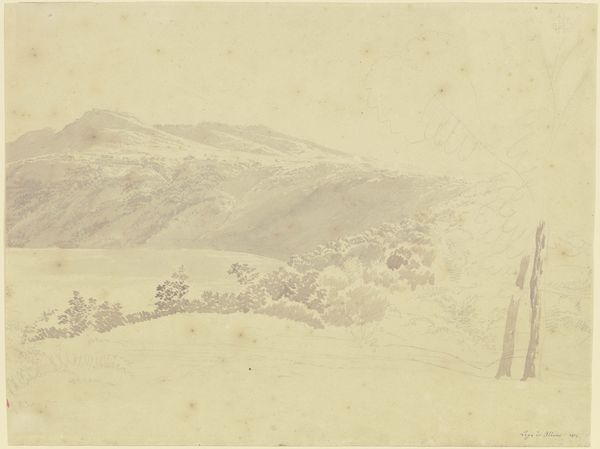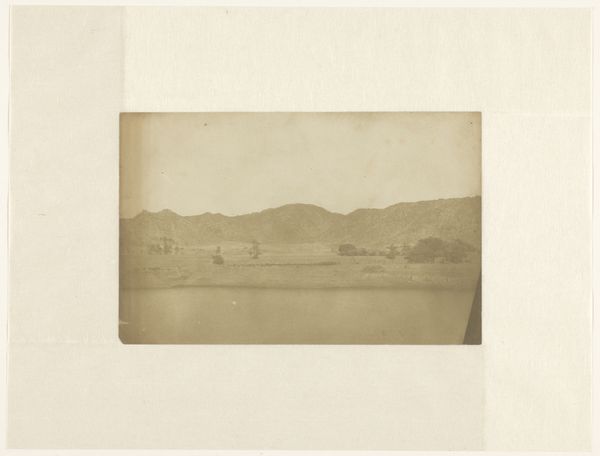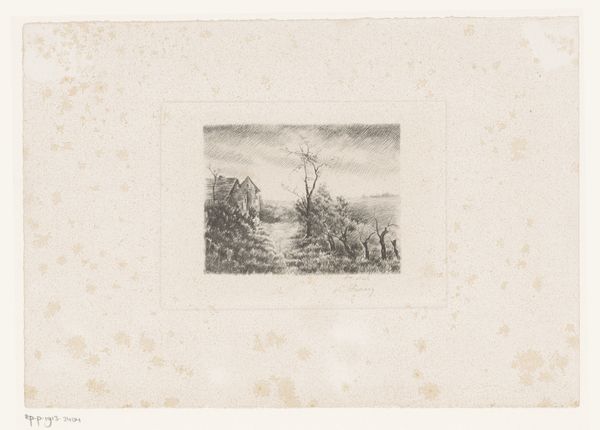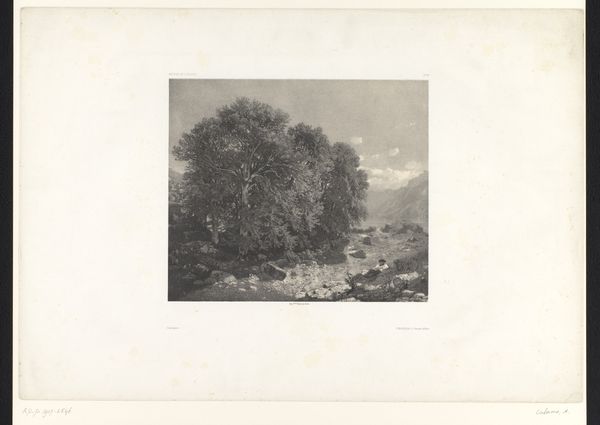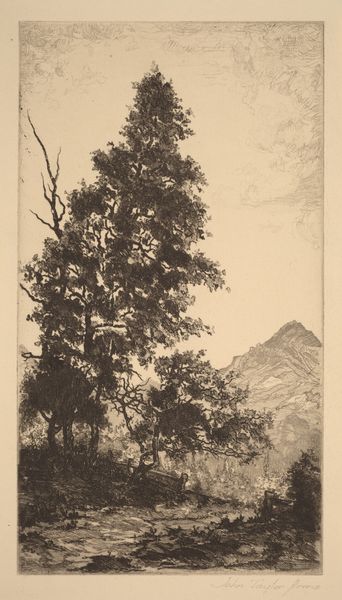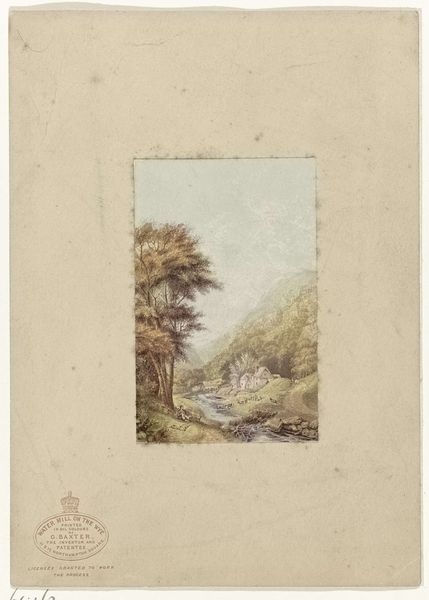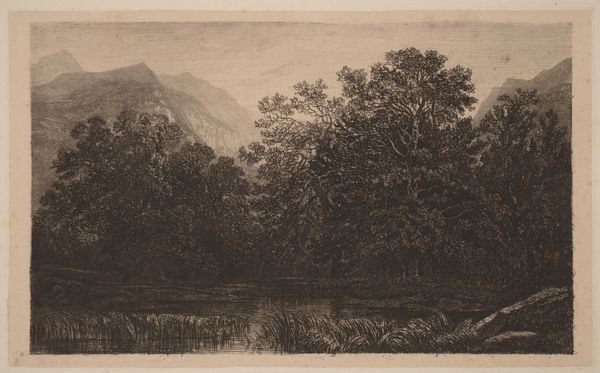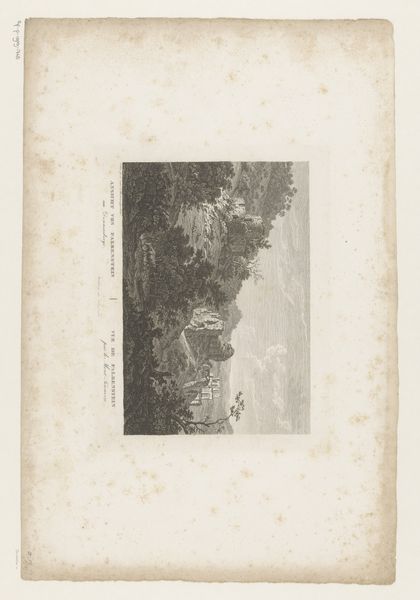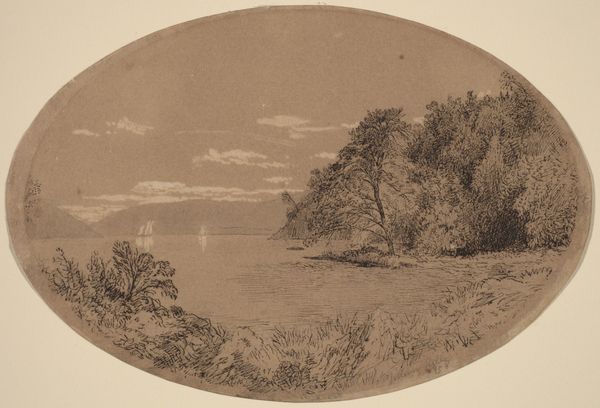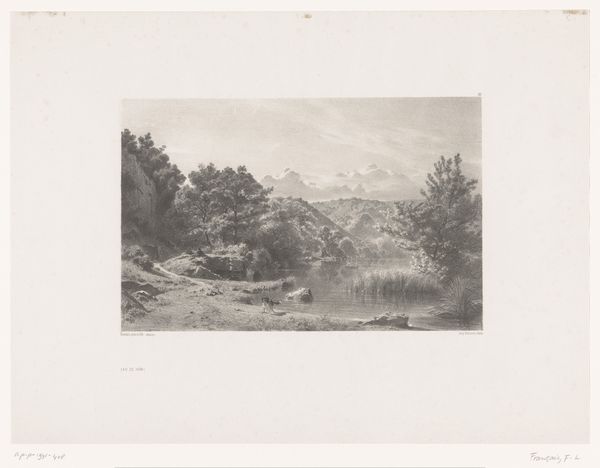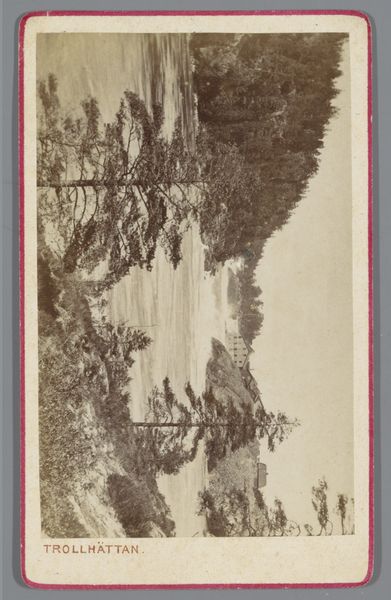
print, photography, albumen-print
# print
#
landscape
#
photography
#
romanticism
#
albumen-print
Dimensions: 8.4 × 10.8 cm (image/paper); 30.6 × 24.1 cm (page/mount)
Copyright: Public Domain
Curator: Today, we're looking at William Henry Fox Talbot’s "Scenery of Loch Katrine," an albumen print dating back to 1844, currently residing here at the Art Institute of Chicago. Editor: It's ethereally faded; like a ghost of a landscape, softened edges where the light almost dissolves the solid forms. Was that intentional, that hazy feel? Curator: Absolutely, I think. This era marks the shift where photography began positioning itself amongst more traditional, accepted art forms. Talbot was, therefore, acutely aware of the artistic sensibilities of his time. The picturesque movement certainly held sway. Editor: I’m intrigued by the albumen print itself. So much involved in crafting one image— coating, sensitizing, developing. Each stage demanding its own type of expertise. It elevates it beyond a mere snapshot, a constructed and physical object as much as it is image. Curator: Precisely, and Loch Katrine was already imbued with cultural significance. Walter Scott’s poem, “The Lady of the Lake”, had cemented the loch as a site of romanticized Scottish identity and beauty. Talbot tapped directly into that sentiment. Editor: It's fascinating how industrial advances were transforming artistic production itself. Thinking of the chemistry, the paper production, even the burgeoning tourist industry enabling such subjects to gain attention and become desirable. Were there commercial drivers in his image-making here? Curator: Definitely, while driven by the aesthetics and politics, we also shouldn’t discount the entrepreneurial spirit. Talbot patented his photographic process and understood its potential market value for dissemination and replication. Editor: So, this serene landscape whispers about labour, commodification and enterprise! Knowing the alchemy involved makes me appreciate how the "ghostly" aesthetic emerges as much from process as artistic choice. It shifts my sense of Romanticism's intended effects here. Curator: Indeed. Through the soft light and Romantic associations, this photograph invites reflection on how landscape and identity intertwine. Editor: And understanding those intricate physical processes also exposes a cultural picture-- one about material realities meeting established ideals and shaping how we envision our landscapes and histories.
Comments
No comments
Be the first to comment and join the conversation on the ultimate creative platform.

